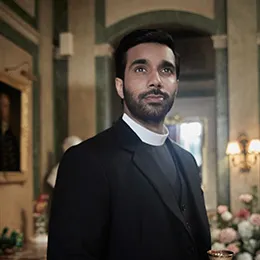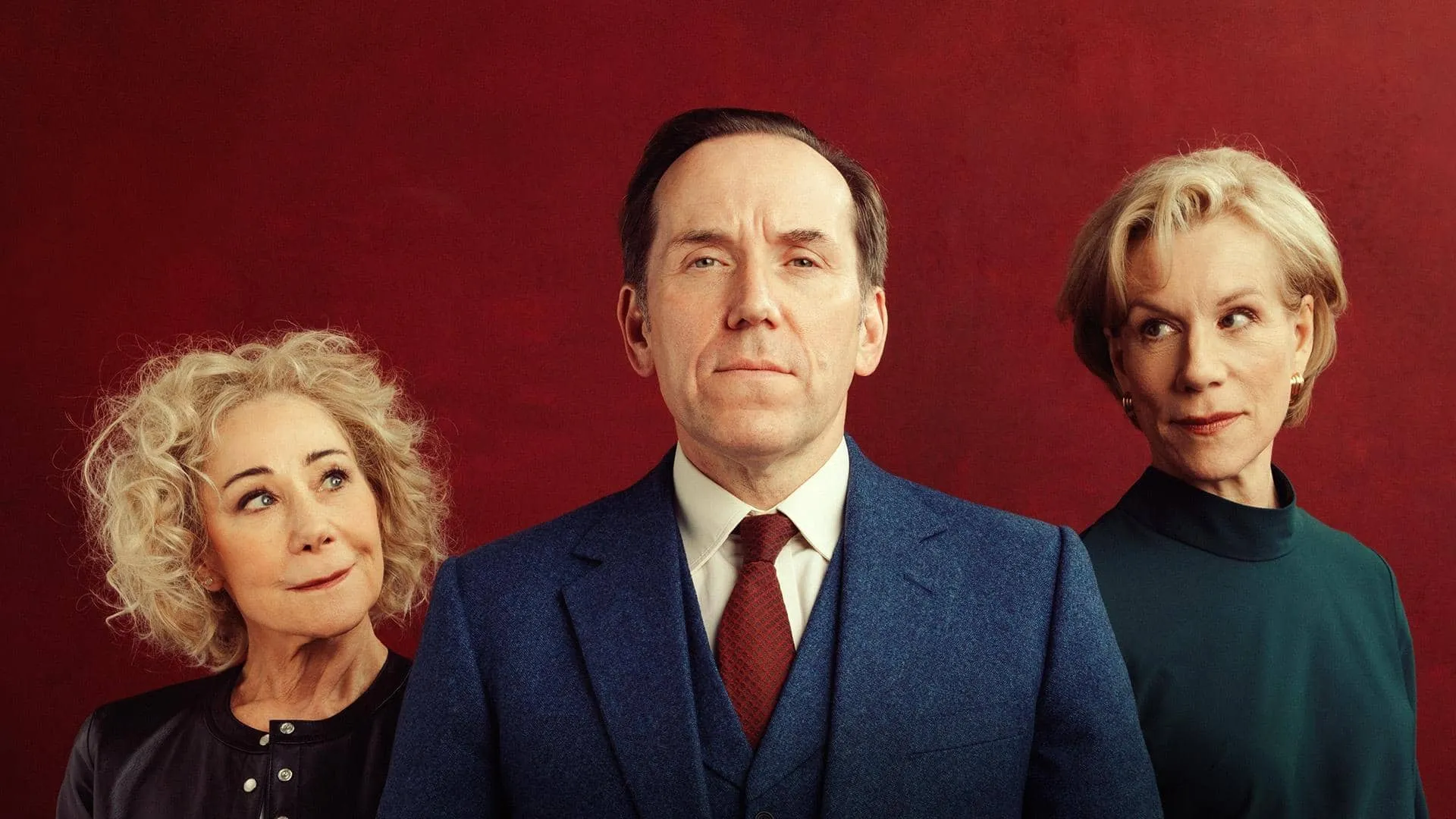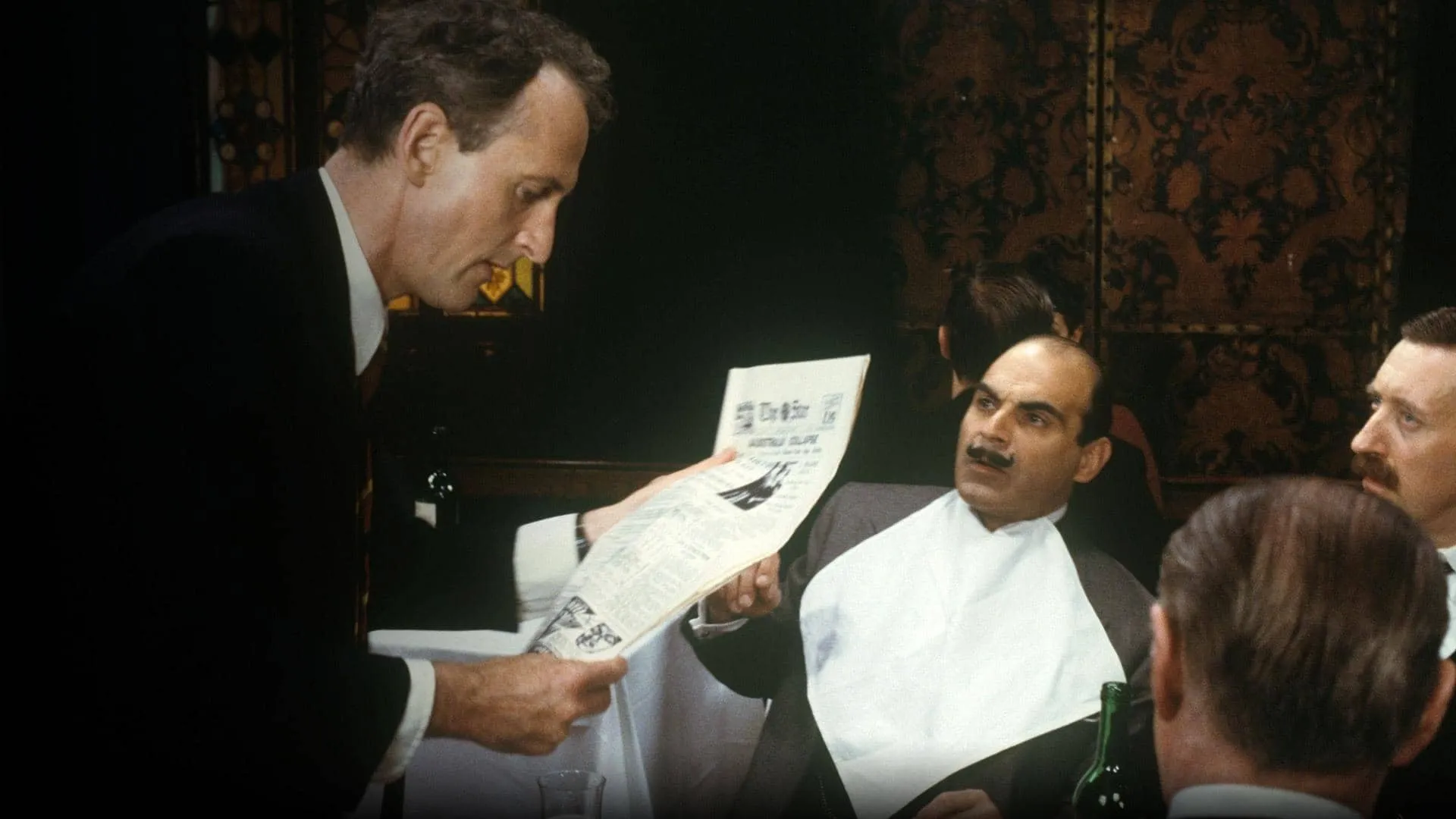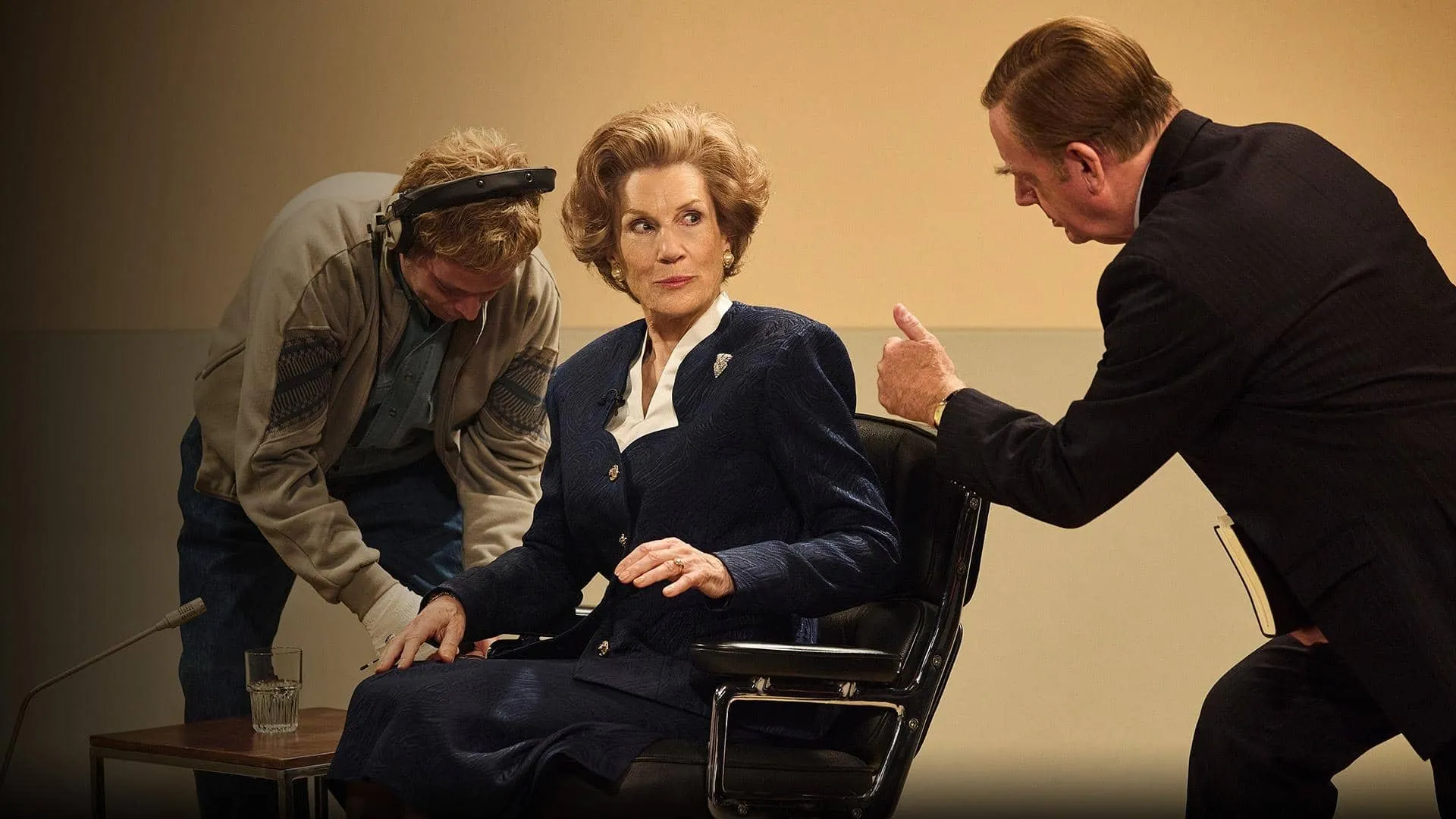

Interview with Tessa Peake-Jones and Kacey Ainsworth on Grantchester Season 10

In Grantchester Season 10, Cathy and Mrs. C. dive into business together, taking their combined know-how and can-do attitudes to a whole new level when they open their fashion boutique, CeCe’s. In an exclusive interview with MASTERPIECE on PBS, Tessa Peake-Jones and Kacey Ainsworth chatted about the evolution of their characters’ style over the years, what it took for Mrs. C. and Cathy to get their boutique off the ground, their own personal favorite fashions from that era, and more.
Masterpiece:
Can you both talk about the style evolution for your characters from Season 1, which was set in the early 1950s, to Season 10, set in the early 1960s?
Tessa and Kacey:
Kacey: Obviously, Cathy's been doing fashion since about Season 3, when she started working at Swinnertons. It was a real change, because around about that time, we started having transatlantic travel. You would get fashion and things from the US, so you were more able to have all of those fashion trends over here that you saw over there.That then meant that Cathy had somewhere to go in her storyline. It's been absolutely brilliant to go from all of the '50s very big skirts, and underskirts, and petticoats, and all of that stuff... and now to come into the early part of the '60s. The fashion, literally, every single year, has changes, but in very subtle ways. And we have a brilliant costume costume designer, Louise Page, who every year elevates the show in terms of the way it looks.Tessa: I have to say, Kacey so suits every single year's costumes...every piece clothing she wears, she looks extraordinary. It's like you were born for that period, Kacey.Mrs. C. started still [wearing fashions from] the '40s, because she's so old-fashioned. For the first several years of the series, she was in the same clothes. We never changed them. But in the last two or three years — particularly in Season 10 as she's becoming more interested in dresses because of Cathy and the dress shop — we've tried to change her very slightly. We haven't really altered the style of dresses she wears, because I don't think she'd ever wear anything approaching the knee. What we've decided to do is open up her color scheme. When she was a housekeeper, she was wearing browns, greens, country, but we're opening that up to brighter colors this year, but even that is quite a big thing for Mrs. C.
Masterpiece:
Do you both have a favorite costume that you've worn over the years?
Tessa and Kacey:
Kacey: During COVID, we did an episode at Merry's summer holiday camp, and we were trying to keep distance and film outside a lot. I had this green suit that had a skirt, but also had shorts to match. It had this bustier top, and then shorts, and then a skirt. When you wanted to tan your legs, you just took this skirt off and underneath were a lovely pair of shorts. I remember trying it on and thinking, "This is great."Tessa: I think my favorite piece every year is Mrs. C.'s brown handbag, which I think I've had since Season 1. Even if I'm not using it in the scene, I have it as my costume and use it to keep all my bits. It comes with me everywhere. I think for Mrs. C., handbags were important because she was quite traditional. You had a hat and bag that matched whatever you wore. It's quite a plain brown, very practical, small handbag, but I think that's probably my favorite thing because it's so Mrs. C.Kacey: Tessa always has a signature scent for the season. Tell them about your perfumes, Tess.Tessa: Quite like every character I play in life, I always have a perfume. For Mrs. C, I wanted an old-fashioned perfume, and I'd been using one that was very, very basic from somewhere like Boots the Chemist. But it was a nice smell for her.Then, one of the young girls we were working with last year said, "You can get all these little bottles of vintage perfumes on eBay that come from the '50s." I thought, "This is amazing." So I ordered some. Apparently, when I was meeting with Lou [Page, costume designer] recently for a costume fitting, she said, "You're not bringing that perfume back, are you, that one particular one? It stinks. The smell was horrible.'"Some of them were horrible because I imagine they were 50 years old. So I've chucked them now. But I found one for this season, a Penhaligon's one. It's actually right up-to-date and has only just been released. It's really old-fashioned and too heavy for me, but it's perfect for Mrs. C.
Masterpiece:
What do you both personally like about 1960s fashion? And what trends did you not like so much from the 1960s?
Tessa and Kacey:
Kacey: '50s fashions suit me so well because of my body shape, so I was a bit worried about going into the '60s. But that's mainly because I remember my Mum talking about being in the '60s and saying, "I was born in the wrong era." My Mum was shaped like Marilyn Monroe, so she was curvy, and she said the shift dresses never suited someone curvy because it’d hang off the bust and she’d lose all her shape.I think when it gets into a bit of the miniskirt-y stuff — which happened much later in the '60s than we imagine — that's when Cathy might have to duck out and carry on in something that's slightly more age appropriate for her. We're not quite there yet [in the series]. We're slightly coming up with the hemlines, but not quite above the knee yet.
Masterpiece:
Do you have any '60s-inspired fashion pieces in your own closet?
Tessa and Kacey:
Kacey: I've got loads. There's a really beautiful vintage shop in Liverpool, and it sells originals from late '60s up to the mid-'70s, which I really like. They drop what fashions they've got on Sundays, so I get onto Instagram to go have a look. I literally think I'm their best customer because I can't resist some of them.And the great thing is, I've got a daughter, so she's always saying to her friends who are looking for something to wear to a ball or black tie event, "Oh, come round and have a look on my mum's rails." She said when she went to university, most of her friends asked, "Why has your Mum got all of this amazing clothing?" She told them she'd grown up with a mum who had a "dressing-up wardrobe." She said to me, "I didn't understand how other people's mum's didn't have rails of ball gowns from different eras."Tessa: I'm not mad about '60s [fashion], personally. It's never suited my body shape. A bit like Kacey's mum, it's just not my era. I didn't like miniskirts — I sound like Mrs. C., now — because I don't feel very confident in my legs, so I've never worn very short things. I'm much more into a male suit, because I used to dress as a boy. Those suits, and loose jackets, and trousers, they're much more my thing. I love that androgynous look.I think it's because, when I was a kid, my mum dressed me very, very male. I'd have really short hair and she'd put me in boys' clothes, so lots of people used to ask, "What does he want to be when he grows up?" And I'd have to say, "I'm a girl."
Masterpiece:
So we've really seen both Mrs. C and Cathy evolve as women since Season 1, both fashion-wise and personality-wise. Can you talk a little bit about that and what their styles say about them?
Tessa and Kacey:
Tessa: I think Mrs. C. started once she'd married Mr. Chapman. Up until that point, she was a housekeeper and quite poor. Because he's quite wealthy, she has spent a little bit more on clothing. I think she had more awareness of being able to spend money on nicer hats, a suit, skirt, and top, without feeling guilty about it.She changed her outer coat to this cream coat — which I love — after she married Jack, and she's had it for about the last six years. It's really smart and goes with everything, whether it's summer, winter, church, or posh. That's something I don't think would've treated herself to when she was a housekeeper.Hopefully going into our next season she will be more influenced by Cathy and what she brings into the shop. Her eyes are going to be opened a little bit, in terms of what clothing is out there. Not necessarily for her age group, but for the younger generation — she'll take more interest in that, I think.Kacey: We try to give a lot more range and not be stereotypical with our characters. We often see in period dramas these working class women, and they would always be very unfashionable, or just very dowdy. And my experience is, if you are poor, you don't want everyone knowing you're poor, so you try to dress up, and I think that's where Cathy comes from. She comes from that [mentality of] "the clothes maketh the man."When she started working at Swinnertons, she tried to change Geordie's suit because he's had the same suit from the Season 1 to now.Tessa: Love that suit.Kacey: The fact of the matter is, we do feel comfortable in what we know. It doesn't really matter that he's wearing the same suit, it's the fact that he feels comfortable in it. I feel like because they both probably grew up in a time of austerity in the world, coming through the War and rationing, that the ability to buy clothes off the peg and not make all of your own clothes, was a wonderful and liberating thing for both Cathy and Mrs. C.I remember that whole matchy-matchy thing that you had with kids back then, because even in the '70s, my mum used to make all of our own clothes. She used to dress me and my sister exactly the same until we were teenagers. But my mum was a really good seamstress, which is one of the reasons why I wanted Cathy to have a shop and be into fashion.
Masterpiece:
What were some of the difficulties for women starting their own business in the '60s, like Mrs. C. and Cathy?
Tessa and Kacey:
Tessa: Women didn't have bank accounts. Your husband had to open the account. But [Cathy and Mrs.C.] got round it, didn't they? But it was very difficult to get any money to invest in the shop.Kacey: It was very difficult for women to start their own business in those days, but they did. We didn't hear about them because they weren't written about, they weren't celebrated, but I think now, we're seeing stories of the innovations that women have done in the early part of the century and mid-century coming to the fore and being educated about them a lot more. That's why we wanted to show it in Grantchester.Tessa: They had no say, no control over their own finances, and even if they were not married, it had to be a male, like a father or brother or something like that. I think it's good that we touch on that. And even though they do get the money from a bank, it really cost them to do it. Hopefully, the audience is going to see that the struggle will be worth it, because the shop's hopefully going to be a success. But it was much harder then vs. now to do your own thing as a woman.



